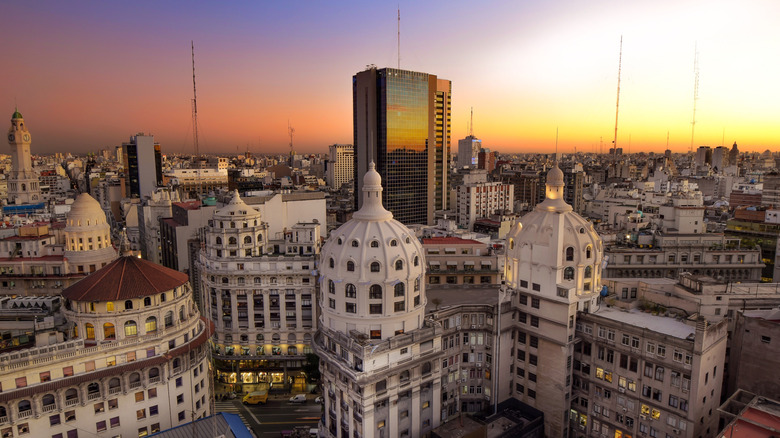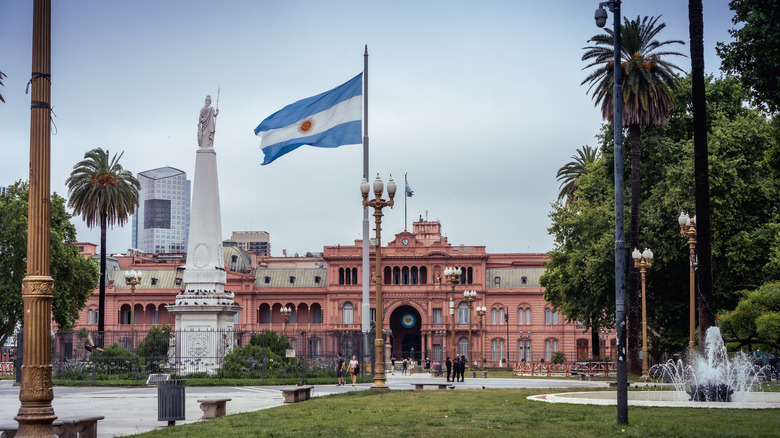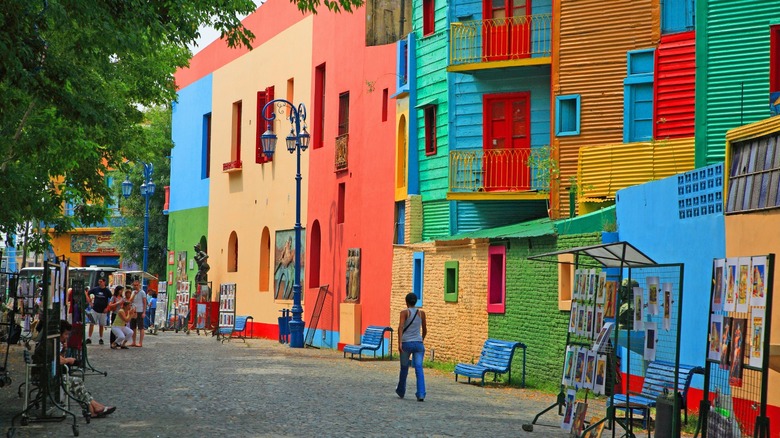This Wildly Underrated Destination Is Best Known As The Europe Of South America
With grand boulevards, elegant buildings, and cobblestone streets, it's no wonder Buenos Aires is dubbed the "Paris of South America." But it isn't merely the architecture. Walking through the city, you feel the energy of Europe with a Latin-American flair. And although it's not on most people's travel radar, it should be because it's a wildly underrated destination.
Ultimately, what makes Buenos Aires so special are the locals, or Porteños as they're called. Porteños are curious people who ask how you are and wait for the answer. Don't be surprised if that casual chat somehow evolves into a philosophical discussion either. Their laid-back nature is disarming and their fascination with psychology can keep any conversation afloat. It also doesn't hurt that Porteños speak with a melodic cadence reminiscent of Italian; intensely present with a dramatized intonation — a bit like how they live.
Porteños love a good social gathering and this shows through a vibrant cafe scene and late-night culture. Since the people also place a high value on art, literature, and intellectual pursuits, the city has numerous theaters, museums, and bookstores. But while it's a city that undoubtedly evokes Parisian vibes, Buenos Aires has a unique character all its own, blending European influences with Indigenous roots and South American spirit. Fully understanding its allure would mean experiencing the city firsthand. But before that happens, we'll give you a little taste by diving into the city's history and its best places to visit.
A brief history of European influences in Buenos Aires
Long before Spanish settlers arrived, indigenous tribes called Buenos Aires home. Their heritage is an integral part of the city, even as 16th-century Spanish colonization transformed it into a bustling port. Eventually, the country gained independence from Spanish rule in 1814, opening the door to even more European influences.
After gaining independence, Argentines recruited notable French architects and engineers to help build the city. Their influences remain today, from the facade of the Metropolitan Cathedral to the Teatro Colón. Parisian-born Thays also left a significant mark, founding the Botanical Gardens, remodeling public squares, and creating tree-lined avenues. But even when the French weren't overseeing the development, their elegant style wove its way into the fabric of the city.
Like the city's architecture, Buenos Aires is a melting pot of cultures. The late 19th century saw huge waves of Spanish and Italian immigrants while neighboring countries dominated more recent immigration patterns. All this has resulted in a megacity with over 13 million inhabitants. And although the city has experienced periods of prosperity and decline, locals maintain a strong spirit and zest for life. So as you explore Buenos Aires, we hope you succumb to this infectious energy while taking in all the history and culture this vibrant city offers.
The best places to visit in Buenos Aires
Buenos Aires is a city of "barrios," or neighborhoods, each with a unique charm. La Boca is an Instagrammers paradise with colorful houses and cobblestone streets. It's impossible not to snap a few photos, especially if tango performers are out. Just make sure to take some precautions against pickpockets and phone snatchers since they tend to frequent tourist hot spots. Meanwhile, San Telmo is one of the city's oldest neighborhoods, boasting original architecture and boho vibes. As you explore these historic alleyways, stop by the San Telmo Market to peruse antiques and snack on local treats.
As the financial heart of Buenos Aires, the microcenter is where you'll truly feel the hustle and bustle of city life. Gaze down the widest avenue in the world, Avenida 9 de Julio, to see the towering Obelisk. Then, head to Plaza del Mayo, an iconic square that has hosted many historical events. It's home to the Casa Rosada (the pastel pink governmental palace) and the Cabildo, a colonial town hall converted into a museum. History buffs may also want to wander Recoleta Cemetery's vast network of catacombs where several famous figures are buried.
If trendy bars and cafes are what you're after, Palermo is the place to be. Enjoy a cafe con leche on an outdoor terrace and people-watch. When hunger strikes, head to one of the neighborhood's renowned restaurants and fill up on tasty steak with red wine. Finally, to experience some much-desired greenery, meander through Palermo's park and botanical gardens. And if you have more time, we highly encourage you to explore the rest of the country. Argentina offers a once-in-a-lifetime vacation experience – Buenos Aires is merely the tip of the iceberg.


